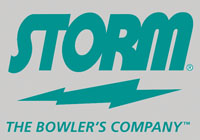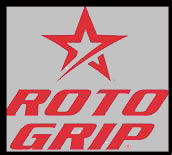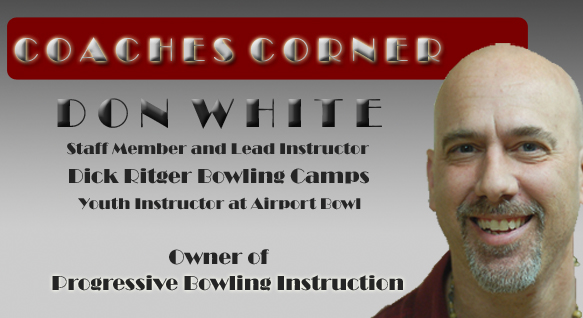 |
|||||||
|
|
Phone 612-423-2102 612-866-7577 E-mail TaoAthletes@aol.com Website Past Articles TIMING When I ask a bowler what they are working on, or what they think the biggest weakness in their game is, “Timing” is the answer I receive the most often. This is quite often then followed with observations of “ I have fast feet” or similar statements regarding the speed at which their feet travel to the foul line. So just what is timing, and what is this fast feet that everyone seems to talk about? I would define timing as the ability to coordinate the feet and the swing to arrive at the foul line in a balanced and leveraged position. There are several different types of timing styles, but there are a few key areas that are essential to virtually all timing styles. Let’s first address the speed at which the feet travel to the foul line. The feet should go just as fast as the swing. It’s that simple. However fast the swing is, the feet go just that fast. To begin to understand this concept we have our bowlers take a practice swing in their stance. We ask them to “ Listen” to their swing and than bowl just that fast. Bowlers with a slower swing will go to the line with a slower tempo with their feet, bowlers with quicker swings will have a faster tempo with their feet and the majority of bowlers will have a moderate speed with their swing and will go to the line with a moderate tempo with their feet. There is no magic speed at which the feet should move to the line. If you watch elite pro and amateur players you will notice all sorts of timing styles and different speeds with which the feet move to the line, and all of them reaching the foul line in a balanced position. The second area affecting timing is the tempo steps. For most bowlers the tempo steps are the first two steps that coincide with when the bowler moves the ball. So for the traditional four step player, the tempo steps would be the first two steps. For a five step player, the tempo steps would be two and three. The tempo steps should be relatively short and the same in size. There should be a flow and rhythm to the tempo steps. Because so many bowlers have been told to “slow down” their tempo steps tend to get very slow and controlled. The subconscious mind knows that this is too slow and than they go to fast in the end to catch up with their swing and the end result is poor timing and balance. The third area affecting timing is the pushaway or ball start. In the traditional four step style, the ball must start with the first step. Legendary coach John Jowdy likes to give the image of a bar in the middle of the ball. In the pushaway the bowler holds the ball around waist high and than give the ball a gentle toss slightly over the bar. I think this is an ideal place for most players who have pushaway problems to start with, but it doesn’t work for everyone. Some bowlers aren’t comfortable with the movement; others like to hold the bar higher or lower in the stance. What you have to look for is where the ball arrives in the swing in the second to last step. The ball should be at or slightly behind the bowler’s ball side knee. If the ball is too far past the knee the ball got into the swing too early. If the ball is too far in front of the knee, the ball got into the swing too late. If either of these situations happens, the bowler must go back and address what is happening in the pushaway motion. I have players who hold the ball very high and use more of an unfolding or unhinging motion with their pushaway. Still others hold the ball very low and have even more of an out and up motion in their start. The key is to find a place where the ball feels comfortable in the stance and the bowler can consistently start the ball in motion with a movement that allows them to have the ball arrive at the proper position in each step of the approach. For bowers who use three steps or have three step timing there is a very different timing method that must be used. If a three step player uses a pushaway the ball will be very late in the swing and they will have to rush at the end to keep up with the swing. Three step players have to use what is called a dropaway for their ball start. In the stance the bowlers holds the ball shoulder high, and than simply let’s the ball drop into their swing. The elbow should barely move forward in the dropaway motion. It’s kind of like a piston unfolding. PBA Hall of Famer Mike Durbin occasionally used a three step approach and can be seen on ESPN Classic using the dropaway technique properly. There are also bowlers who take 4 or 5 steps but are unable to move the ball until the last three steps. We refer to these players as also having three step timing and must use the dropaway feeling to ensure proper timing. Senior PBA star Henry Gonzalez is a five step player who uses three step timing. There is nothing wrong with using three step timing, so a bowler whose natural body movement is to move the ball in three steps should not force themselves into four step timing, but understand how to move the ball to match their style. The most successful female youth player I ever coached was a four step player with three step timing and won close to $20,000 in scholarship money in her youth career. If you are having trouble with your timing or balance, I would suggest you videotape yourself or have a friend watch you from the side. Take a look at where the ball is at in your stance and where it is at in each step of the approach. Is the ball movement in the start where it should be? Is the speed of the feet consistent with the speed of the swing? By watching each step of the approach and where the ball is at in each step you should be able to diagnose your timing problems. Please feel free to call or e-mail me if you have any questions.
|





